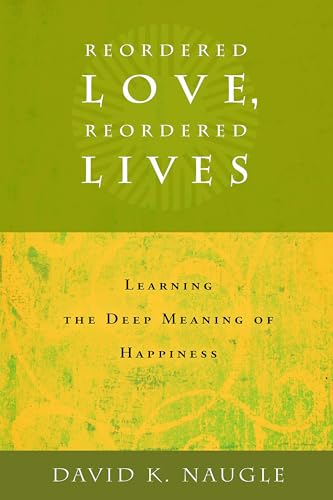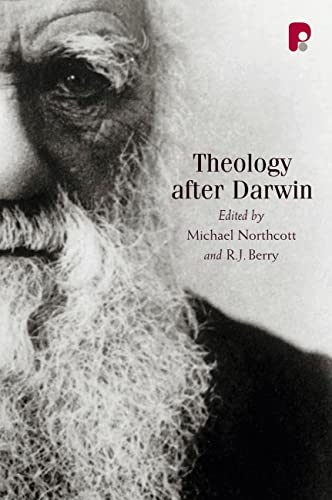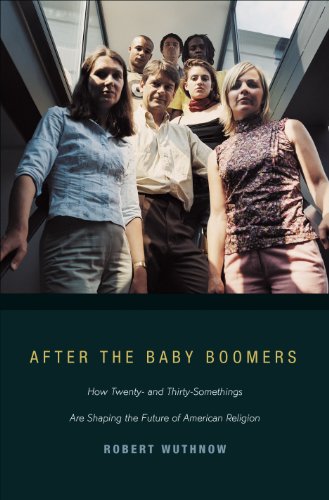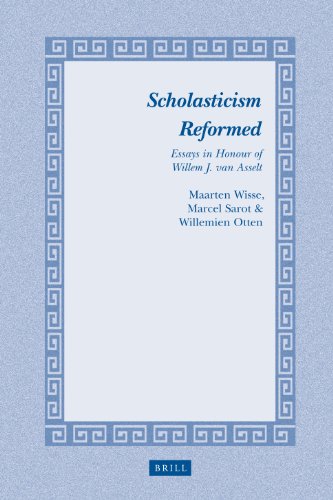Zondervan Bible Reference Bundle
Written by Zondervan Reviewed By Andrew David NaselliUsers of Logos Bible Software rejoiced in September 2009 when Zondervan announced that they would partner with Logos. Logos users have been repeatedly requesting for nearly twenty years that Logos add Zondervan products, but for various reasons that has not happened until recently. Zondervan had been making their books available as software, but only in their own Pradis platform for the most part. Now they are producing new digital products in multiple formats and across many devices, and this includes licensing Logos’ technology to make their books available on the Logos platform. Zondervan’s first Logos collection is the Zondervan Bible Reference Bundle, which became available for download in April 2010. This 87-volume collection contains the following sets:
- Frank E. Gaebelein, ed., The Expositor’s Bible Commentary (12 vols.; 1972–92) and Kenneth L. Barker and John R. Kohlenberger III, eds., Abridged Edition of the EBC (2 vols.; 1994). This is the original EBC-set, not the Revised EBC that is partially published now. Over seventy scholars contribute to the series, and volume 1 is a valuable collection of introductory essays. The evangelical series is not as technical as NICNT, BECNT, WBC, NIGTC, or ICC, but it is not as light as NIVAC (below). A few volumes (e.g., D. A. Carson, “Matthew”) are significantly longer and more advanced and rigorous than others.
- NIV Application Commentary: OT Prophets (8 vols.; 1999–2006) and NT (20 vols.; 1994–2004). The better volumes include John N. Oswalt, Isaiah; Matthew J. Wilkins, Matthew; Darrell L. Bock, Luke; Ajith Fernando, Acts; Douglas J. Moo, Romans and 2 Peter and Jude; Craig L. Blomberg, 1 Corinthians; Frank Thielman, Philippians; and George H. Guthrie, Hebrews. NIVAC is relatively thin on exegesis and thick on bridging the text to relevant application, and it can be extraordinarily useful for preachers toward the end of sermon preparation.
- Colin Brown, ed., New International Dictionary of New Testament Theology (4 vols.; 1975–78). This translates, revises, and expands Theologisches Begriffslexikon zum Neuen Testament (ed. Lothar Coenen, Erich Beyreuther, and Hans Bietenhard; 1967–71). Zondervan originally published the English translation in three volumes, and it reissued NIDNTT in 1986 with a fourth volume that comprehensively indexes the dictionary. Articles discuss the usage of particular words under three categories: classical and secular Greek, the OT, and the NT. The dictionary focuses on theology and discusses other information like history if it is theologically relevant. The main headings list English words in alphabetical order (e.g., “Life”), and subheadings list Greek words in alphabetical order (e.g., βίος and ζωή).
- Willem A. VanGemeren, ed., New International Dictionary of Old Testament Theology and Exegesis(5 vols.; 1997). This begins with a 215-page textbook-like guide to OT theology and exegesis, addressing five areas with reference to hermeneutics and theology: text, history, literature, semantics, and canon. Over three thousand lexical and topical articles by over 200 scholars follow. The lexical section is the longest (1:219–4:343), and NIDOTTE concludes with a topical dictionary (4:345–1322) and a corresponding index of semantic fields (5:1–216) and other detailed indexes. The lexical section alphabetically lists Hebrew words, and the topical dictionary alphabetically lists English words (e.g., the theology of each book of the OT).
- Clinton E. Arnold, ed., Zondervan Illustrated Bible Backgrounds Commentary: New Testament (4 vols.; 2002). This is the counterpart to the OT-set below; both sets are geared more for laypeople than Bible scholars and include hundreds of photographs, drawings, maps, diagrams, and charts. The commentaries are not typical but instead focus on the Bible’s cultural context. The NT-set draws on studies of Judaism, Roman culture, Hellenism, archeology, and other features of the NT-world. Contributors include George H. Guthrie (Hebrews), Douglas J. Moo (Romans, James, 2 Peter, Jude), Mark L. Strauss (Luke), and Robert Yarbrough (1–3 John).
- John H. Walton, ed., Zondervan Illustrated Bible Backgrounds Commentary: Old Testament (5 vols.; 2009). Thirty international scholars contribute commentaries on the entire OT (e.g., Daniel Block on Judges; John Monson on 1 Kings) in light of archeology, history, geography, and manners and customs.
- Zondervan Encyclopedia of the Bible (2nd ed.; 5 vols.; 2009). Merrill C. Tenney edited the first edition in 1975: the Zondervan Pictorial Encyclopedia of the Bible. “The present revised edition,” edited by Moisés Silva, “seeks to preserve the original contributions as much as possible while at the same time updating the material to serve a new generation” (p. v). It includes about 250 international contributors; over 7,500 articles on the Bible’s history, literature, and theology; and nearly 2,000 colorful maps, illustrations, charts, and graphs. The target audience for this encyclopedia is wide: families, pastors, teachers, and students, both libraries and individual study.
The Zondervan bundle also includes twenty-two individual titles ranging from valuable to not-so-valuable. The former include Gordon D. Fee and Douglas Stuart, How to Read the Bible for All Its Worth (3rd ed.; 2003) and How to Read the Bible Book by Book (2002); and J. Daniel Hays, J. Scott Duvall, and C. Marvin Pate, eds., Dictionary of Biblical Prophecy and End Times (2007).
Readers of this journal probably agree that most of the books in this reference bundle are valuable. But are they worth $2,000? That’s where the rub comes because consumers may want to purchase only some of the volumes in this bundle rather than all of them. Consequently, Zondervan is also selling parts of this reference bundle as individual titles (e.g., the 20-volume NIVAC NT sells for $382.99, NIDOTTE for $159.99, and ZEB for $223.99). Owning these resources for the Logos platform is far superior to owning print copies, and the prices are reasonable. I have made a case elsewhere for using electronic resources—especially reference resources like commentaries and dictionaries—on the Logos platform: “Review of Scholar’s Library: Gold, Version 3, by Logos Bible Software,” DBSJ 11 (2006): 151–60; and PNTC, BECNT, and NIGTC: Three New Testament Commentary Series Available Electronically in Libronix,” DBSJ 12 (2007): 81–99. In short, using electronic resources on the Logos platform is more efficient than using print resources because of the former’s searchability and versatility. Logos offers multiple searching capabilities that far exceed print books in both speed and thoroughness, and books in Logos are superior to print books with reference to accessibility, readability, marking, copying and pasting, saving, and linking. Plus Logos resources are now available on the iPhone (and other smart phones) and iPad. The new partnership between Zondervan and Logos Bible Software serves Bible students well.
Andrew David Naselli
Andy Naselli is assistant professor of New Testament and Biblical Theology at Bethlehem College and Seminary in Minneapolis and administrator of Themelios.
Other Articles in this Issue
Most of us, I suspect, develop fairly standard ways, one might even say repetitive ways, to appeal to the motivations of our hearers when we preach the gospel...
How to Write—and How Not to Write—A Review: An Appreciative Response to Reviews of Ancient Near Eastern Themes in Biblical Theology by Dempster and Edgar
by Jeffrey J. NiehausI want to thank Themelios for the unusual opportunity to interact with two reviewers of my book Ancient Near Eastern Themes in Biblical Theology...
Parallels, Real or Imagined? A Review Article of Jeffrey J. Niehaus, Ancient Near Eastern Themes in Biblical Theology
by William EdgarWhen I came to Westminster Theological Seminary in Philadelphia as a young student in the 1960s, two things struck me...
Why Evangelicals Should Ignore Brian McLaren: How the New Testament Requires Evangelicals to Render a Judgment on the Moral Status of Homosexuality
by Denny BurkIn 2006 on Christianity Today’s leadership blog, Pastor Brian McLaren urged evangelical leaders to find a “Pastoral Response” to their parishioners on the issue of homosexuality...
A Member of the Family or a Stranger? A Review Article of Jeffrey J. Niehaus, Ancient Near Eastern
by Stephen DempsterWe cannot overstate how important knowing the context is for understanding the significance of any communication, whether that is a simple word, sentence, paragraph, larger text, sign, photograph, or cultural cue...






